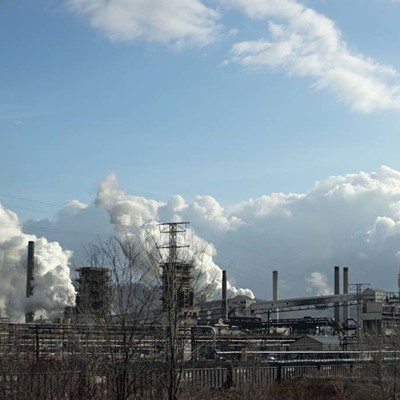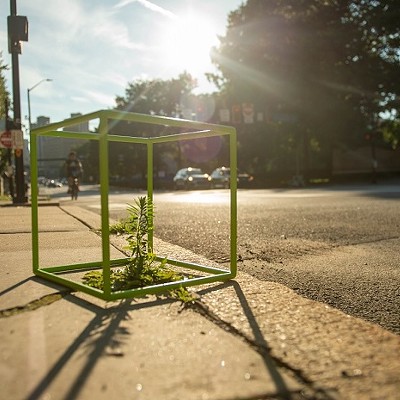Between last year's G-20 summit and last week's World Environment Day, we've heard civic boosters chatter about how green Pittsburgh is. Like a favorite bedtime story, we've been endlessly regaled with the region's transformation from soot-choked Mordor to shimmering-green role model.
For example: "Who could have imagined a Pittsburgh known as much for environmental transformation as for its industrial might?" enthused Allegheny Conference on Community Development spokesman Bill Flanagan at WED's "Water Matters!" conference. "Pittsburghers did imagine it, and together we made it happen."
But if "greenness" strives toward environmental sustainability -- the capacity to support your way of life indefinitely -- Pittsburgh remains no greener than any other North American city dependent on fossil fuels and old-school economic growth.
Moreover, while Pittsburgh has improved upon its long-ago visible air, by two big criteria, we are well below average environmentally.
Energy. Coal, the dirtiest energy source, generates 75 percent of Pittsburgh's electricity, estimates the U.S. Energy Information Administration -- nearly twice the national average. Think strip-mining, poisoned water, soot and airborne mercury.
Sprawl. Though the regional population hasn't grown in 60 years, we keep consuming more land: At least two studies have ranked Greater Pittsburgh among the country's most sprawling metro areas. We pay the price in habitat destruction, lost farmland, long commutes -- and stormwater runoff flooding river towns.
Meanwhile, federal standards frequently classify our air as a health risk from ozone, and even soot, still, in some places. And each year, area streams absorb 17 billion gallons of untreated sewage that flushes pipes during storms.
Moreover, some of our oft-cited environmental "wins" are easily overstated.
Take our 50-some LEED-certified buildings. That's quite a few for a city this size. But it's also a drop in the bucket: While LEED-ers like the David L. Lawrence Convention Center set a good example, 99.99 percent of our buildings are likely to remain uncertified for environmental friendliness. Meanwhile, Pennsylvania's per-capita energy usage is statistically middling; consumption is much lower in states like New York and Rhode Island, where people live closer together and drive less, green buildings or no.
Then there's biodiversity. In 2001, mayflies, a harbinger of cleaner water, returned after decades gone. Local rivers shelter growing numbers of fish and mussel species. Allegheny County now even has a resident bald eagle.
But like us, that eagle better watch what she eats: Most fish caught near Pittsburgh are not recommended for regular consumption because of mercury and other toxins. And Pitt researchers have found "intersex" fish, with both male and female sex characteristics, suggesting the rivers harbor dangerous concentrations of hormone-disrupting chemicals found in consumer products.
Meanwhile, fears about water pollution from a regional natural-gas drilling boom just landed the Monongahela on American Rivers' list of 10 most endangered rivers.
It can all feel a sickly green, at best.
To be sure, thousands of people are earnestly working to make Pittsburgh greener. And optimists like Court Gould, of advocacy group Sustainable Pittsburgh, couch our greening efforts in terms of, well, effort. His big question is: "Are we moving in the right direction?"
But this is a region where politicians have long fought tougher environmental standards in the name of economic growth. In 1997, Mayor Tom Murphy personally lobbied Vice President Al Gore about the risks new federal air-pollution rules posed to business. Today, County Executive Dan Onorato favors scrapping local air-pollution standards for often-looser state pollution limits.
However green it might be, Pittsburgh shouldn't take too much credit.
"Some of the progress we made, we lucked out," says Carnegie Mellon history professor Joel Tarr.
For instance, Tarr says, the success of post-war smoke-control efforts owed much to the sudden availability of cheaper natural gas to replace coal. And later, pollutants dwindled because of something no one planned, let alone desired: the collapse of heavy industry, which outsourced our pollution along with our production.
New federal pollution standards, not local ones, were responsible for much of the rest of the improvement, though these measures were often aided by local environmental groups who took on vested interests.
Where does that leave us? Tarr sums up: "We're not the worst, we're not the best. We're somewhere in the middle, and we still have a ways to go."














